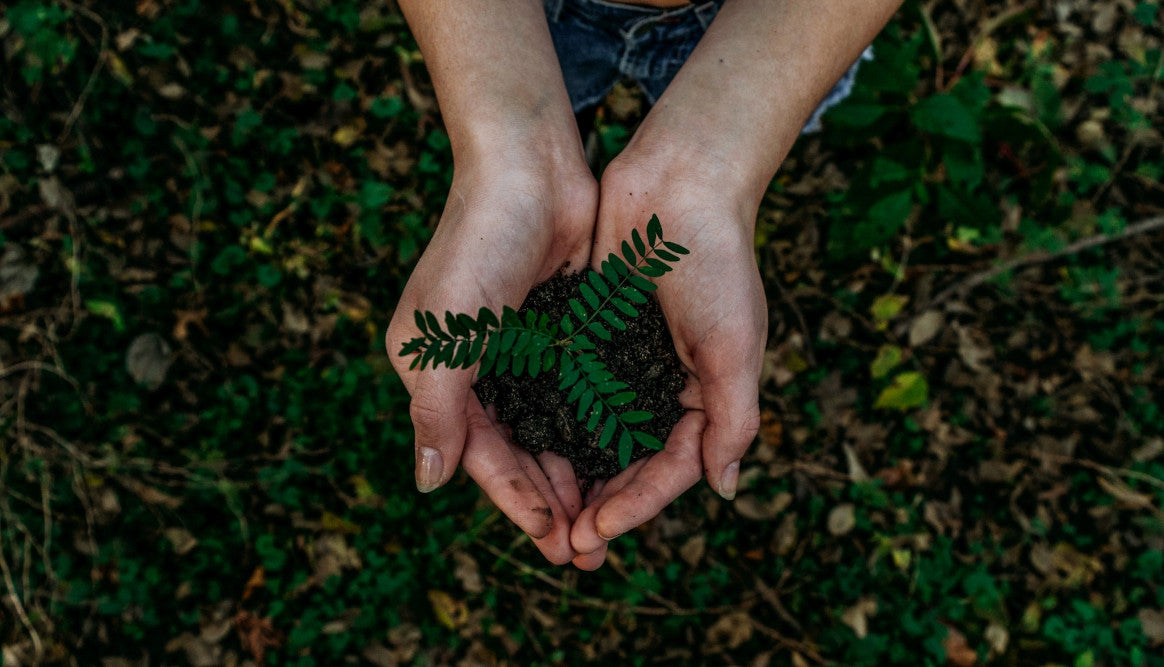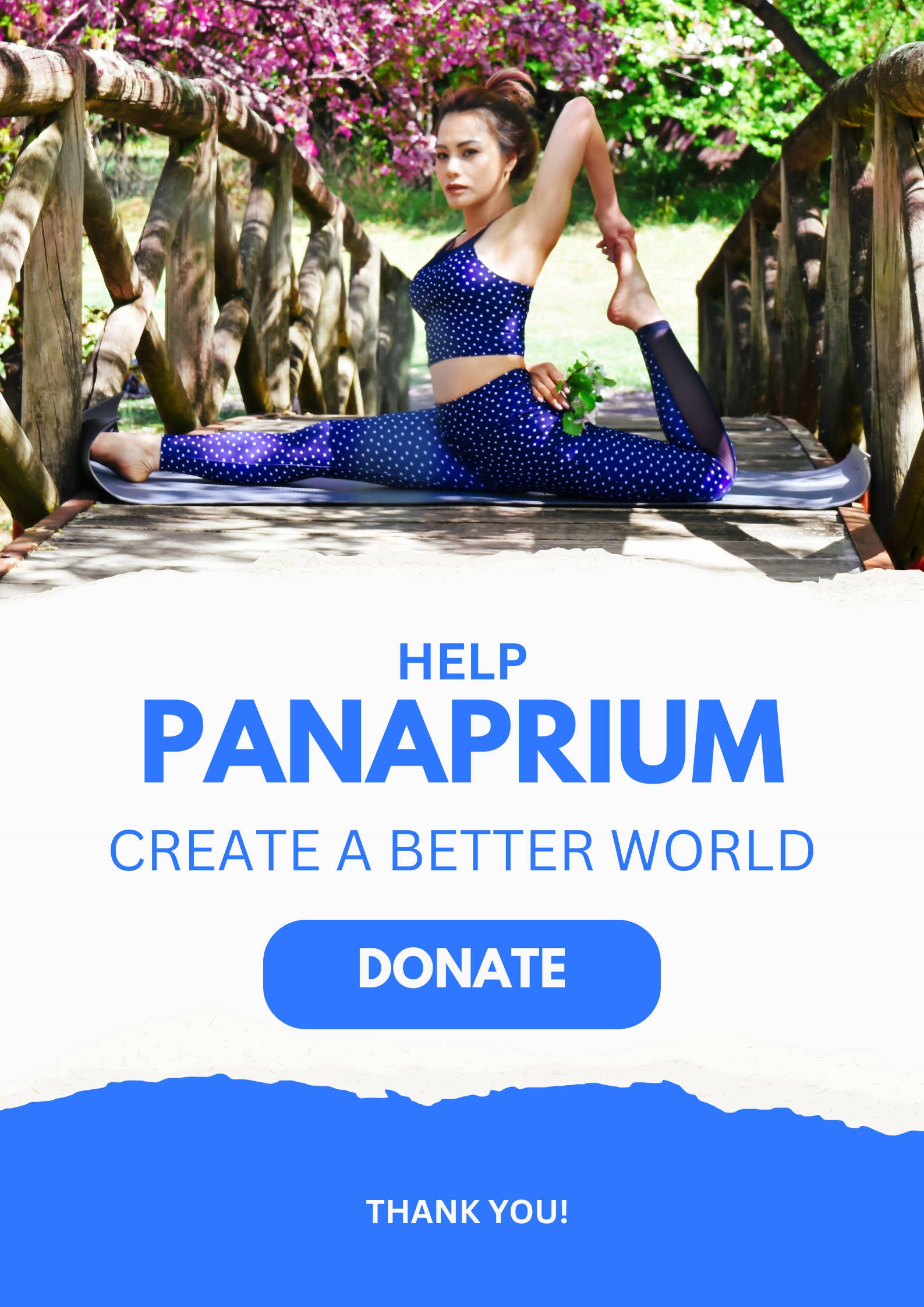
Sustainable living means sustaining the earth by protecting its natural resources. A sustainable lifestyle embraces habits that do not harm the earth, such as avoiding plastic waste. But sustainable living also means creating health benefits for yourself and the people around you.
Sustainable living has four main focuses. First, cutting back or avoiding waste, especially plastic waste. Second, interacting with the environment in a way that does not unbalance it. Third, working to reduce the drain on the earth’s natural resources, like water and oil. Finally, developing safe and comfortable human spaces for everyone to work and live together.
This sounds wonderful, but can you picture what your life would look like if you tried to live out those goals? Take a look at twelve tips for how to live a sustainable life to get started!
Panaprium is independent and reader supported. If you buy something through our link, we may earn a commission. If you can, please support us on a monthly basis. It takes less than a minute to set up, and you will be making a big impact every single month. Thank you!
Master the R's

Using or repurposing an item you already own instead of buying something new goes a long way toward creating a sustainable lifestyle.
We all know the reduce, reuse, recycle chant we learned in grade school. Try adding one more R to your arsenal--repurpose! If it helps, you can think of this as the trendy “upcycle” craze instead.
Before you buy a new coat, dining room table, or flowerpot, consider if you can avoid buying a newly manufactured product. As yourself a few quick questions:
- Can I reuse or upcycle an item I already have to fill this need? For example, do you have a colander or a cute basket that you could use instead of a flower pot to hold a plant and decorate your patio?
- When you get rid of the old item you want to replace, how will you dispose of it? Can you recycle or donate it instead of sending it to a landfill?
- Can you buy or trade for a used item instead of buying it new? If you can thrift or freecycle an item you can rescue something that would have gone to a landfill and give it a new life. Plus, you will save yourself a lot of money!
- When you do need something new, can you buy it from brands that use recycled materials in their products?
If you drive past a landfill or watch a documentary like Wasteland you may feel overwhelmed and discouraged. Does it really matter if you upcycle all your furniture, buy clothing made from recycled materials, and reduce your own waste?
The answer is yes! Individual choices can help reduce carbon emissions. But in the bigger picture, voting with your dollars might make even more of a difference. If enough individuals support brands and companies that make sustainable choices, big corporations will have to alter their harmful practices and reduce their carbon emissions, too!
One super important way you can vote for a more sustainable world with your dollars is to make ethical fashion choices.
Skip Fast Fashion

One of the best ways you can support a global shift toward sustainability is to buy sustainably produced products and boycott corporations that do not use sustainable methods.
Did you know that over 85% of the clothes made every year end up in a landfill? To make this even worse, more than half of those clothes contain a plastic-based synthetic material like polyester that can’t decompose and sheds micro pollution of plastic particles into the waterways and oceans.
On top of this shocking percentage, recent studies also show that the methods used to manufacture those garments create as much as 10% of global carbon emissions every year! Fast fashion also sucks up huge amounts of water and then pollutes a great deal of that water with dangerous dyeing and finishing methods.
Fast fashion is the idea that garments can go from design to mass production in a short time frame to enable a constant flow of new garments for consumers. Fast fashion clothes often contain cheap synthetics that lead to microplastic pollution and eventually fill up dumps because people spend so little on these items that they constantly toss them and buy new ones!
Of course, one of the hallmarks of fast fashion is also that it uses cheap materials and low-quality production designed to make the clothes suitable for short-term use. That way, you have to keep going back to the store to buy new clothes on a regular basis.
You can find out more about the difference between fast and slow fashion here.
You don’t need to commit to never buying new clothing in order to avoid fast fashion and live more sustainably. Instead, buy from brands that use thoughtful, sustainable production methods. Look for certifications like Global Recycled Standard, Better Cotton Initiative, and PETA-Approved Vegan.
Learn to Cook

Another simple way to switch to a more sustainable lifestyle is to eat at home more often. Any time you can avoid getting in your car, you reduce carbon emissions. Plus, eating at home allows you to choose organically grown, locally sourced, earth-friendly ingredients. You won’t fill up your garbage bin with armfuls of takeout containers, either!
A recent Harvard study suggests that the best ways to eat sustainably include focusing on a plant-based diet, avoiding meat but finding safe fish to eat, buying locally-grown produce, and eating mindfully.
You don’t need to become a five-star chef or whip up impressive concoctions like the contestants on the Great British Baking Show. Instead, start small by meal-prepping the salads you take to work for lunch each day. Or take an hour on the weekend to simmer a pot of soup you can eat throughout the week.
Plus, you can find many free resources to help you master the basics of cooking your own food. Visit your local public library to browse free cookbooks, follow a sustainable-living chef on Instagram, or save a portfolio of your favorite recipes on Pinterest!
Another great way to cook sustainably is to start your week with a meal plan. This helps you actually use the groceries you buy, instead of tossing them out because you forgot and ordered pizza two nights of the week.
And don’t forget your leftovers! Try placing leftovers in transparent glass containers front and center in your fridge. Make it a goal to take leftovers for your work lunch a few days a week. This way you can enjoy the food you worked hard to prepare multiple times instead of just once--and you won’t add to the food waste problem, either.
Buy Local Food

When you buy tomatoes and corn from the farm just two miles away, you do not inadvertently pay for the thousands of miles of gas and travel that come with most commercially grown produce. This makes buying locally-grown food an important part of sustainable living because it reduces your carbon footprint.
The simple equation of cutting back on travel to reduce carbon emissions could have a huge impact on the environment if enough people supported the cause of buying locally.
Often locally grown food tastes better and even has greater nutritional value because farmers let the food ripen all the way on the plant, rather than harvesting it while unripe in order to preserve it during shipment.
If you have never bought food outside of a chain grocery store you may wonder how to get started on your quest to eat locally. Look for farmer’s markets or farm stands nearby to buy in-season, locally-grown produce. Or join a local CSA, which is a community-supported agriculture group that lets you buy from local farms as a group.
Avoid Plastic

If you have seen pictures of the Great Pacific Garbage Patch made out of plastic waste floating in the ocean, you know why avoiding plastic is such an important part of sustainable living. Plastic does not decompose and can take 500 years to even begin to degrade!
Most plastics like polyester products come from byproducts of petroleum. This means that plastic materials also use up a nonrenewable natural resource.
It's true that a real solution to the plastic problem will require big corporations to use alternative packaging or alternative product materials, but you can do your part by choosing alternatives to plastic, too.
- Start by challenging yourself to cut plastic bags out of your life. Make compostable waste bin liners out of newspaper and keep canvas totes in your car for your grocery runs.
- Invest in reusable glass or stainless steel containers to store your food instead of buying new plastic containers every time one gets warped in the dishwasher.
- Stop buying plastic water bottles. Get yourself a set of high-quality reusable glass or stainless steel bottles and keep them in a constant rotation so that you always have one on hand. That way, you will not need to dash into the gas station to buy an emergency plastic water bottle on a road trip!
- Ideally, the end goal of your plastic-less process is to adopt a zero-waste lifestyle where you do not have to throw away anything at all except scraps into your compost bin!
You can find 20 more great ideas for how to reduce plastic waste in your sustainable lifestyle here!
Walk, Bike, Ride Share

You may find that cutting back on your commute is one of the most challenging aspects of living a truly sustainable lifestyle. If you live in a city, you can pretty easily walk, bike, or take public transit to get where you need to go.
But what about people who live in the country and commute to work in a city, or people who live in the suburbs?
Any steps you can take to reduce carbon emissions and cut down on the use of nonrenewable resources like gas are valuable. Perhaps you can ride share on your commute to work, or take a bus route even if it takes longer than driving by car. Maybe your company will allow you to work from home two days a week.
You can also save up your errands and take care of several tasks in one car trip instead of driving out to town for each errand on separate occasions. If you can afford it, buy a gas-efficient or even an electronic vehicle.
And you can support politicians and organizations seeking to implement eco-friendly public transportation.
Worry About Water

Conserving water use also plays an important role in sustainable living. Using less water means less energy spent pumping water through treatment and wastewater facilities, and it also means less water sucked out of rivers, lakes, ad estuaries.
Depending on where you live, you can use many of these helpful tips to avoid wasting water:
- Wait to run your dishwasher or washer until you have a full load ready to go.
- Try setting a reasonable time limit for your showers, and run a timer to make sure you stick to it!
- Use a rain barrel to water your garden. Or set up a drip irrigation system to avoid the waste of sprinkler systems.
- Use energy-efficient appliances and showerheads. In some cases, your electric company or a local government agency may provide these for free or at a subsidized cost.
Another big way to practice sustainable living with water is to avoid buying clothes from fast fashion companies that use literally tons of water to produce the clothes they sell. In fact, the fashion industry singlehandedly produces close to 20% of all wastewater worldwide, with lots of that wastewater polluted by dyes ad pesticides.
You can find out more about the problem of water waste in the fashion industry here.
Ease Up on Electricity

You choose a more sustainable lifestyle when you choose to use less electricity in your life, too. Electricity on its own may not harm the environment, but the way electrical power gets to most homes does cause a great deal of harm.
This is because many power plants burn fossil fuels like coal to create the power that turns on your lights and runs your refrigerator. Producing electricity releases greenhouse gases into the air, wastes water on cooling equipment, and also creates dangerous solid waste in some cases. You can find out what the United States Environmental Protection Agency has to say about the impact of the electricity system here.
The great news is that easing up on your use of electricity in your home will also save you money!
Try a few of these tips to reduce your use of electricity in your home:
- Check the lightbulbs in your home. Don't forget spots like the basement and closets! Switch out old-fashioned bulbs for more efficient LED bulbs.
- Use cold water in your washing machine. This means you will not waste electricity heating up the water in your hot water heater. It also keeps your clothes in good shape, because hot water can wear out fabric more quickly than cold water.
- Unplug devices and most appliances when you don’t need them. Even if you turned off the appliance, it will still draw a small current of phantom energy while plugged in.
- Educate yourself on energy-efficient appliances. Next time you need to replace an appliance, buy one that uses less electricity.
- Do you own your home? If so, check to see if your local power company or a government agency will help pay for the installation of solar panels on your house.
Living sustainably does not mean going off-grid and cutting yourself off from power lines. It just means making thoughtful use of the resource of electricity in your home. You can find out more about how mindful use of electricity benefits the environment in this article from Harvard University.
Grow Your Own Salad

Growing your own food reduces all the plastic packaging that comes with grocery-store food, cuts back on the pesticide pollution used in most commercial food production, and helps you develop mindful eating practices.
You don’t need to move out to the country and start a micro farm to accomplish this sustainable living goal. You can grow enough lettuce to eat salads all week in just a few small containers perched in a kitchen window or placed on a patio or balcony.
Learn how to build your own container garden here following tips like choosing fast-growing herbs such as thyme or mint and picking the right potting soil for your produce.
Check your local library, an agricultural center, or a master gardener’s club to see if you can borrow seeds for free from a local seed bank! Besides saving money, this will allow you to grow heirloom plants instead of reproducing the lab-made hybrids you would get from most big-box home improvement stores.
Compost What You Can

Composting leads to more sustainable living because it helps you reduce waste and also leads to healthy home-grown plants you can eat.
Did you know that over 40%--nearly half--of all the food sold in America ends up in a landfill? This huge amount of waste has a lot of causes such as grocery stores displaying too much and throwing away all the leftovers each day, but it also stems from individuals throwing away nearly a third of all the food they buy each week.
When food waste piles up in a landfill, it releases massive amounts of methane gas into the environment. Instead of tossing out food scraps like banana peels and coffee grounds, you can easily create your own compost bin in your basement or backyard! Once the food waste decomposes you can add the rich nutrients to the soil you use to grow your garden.
You can learn how to get started with compost here, using a dedicated container or even forming a free-standing compost pile in a corner of your yard.
Save the Bees

If you have a yard you can take a big step toward sustainable living by converting your patch of grass into a sanctuary for bees. Sometimes called a bee lawn or a pollinator habitat, this eco-friendly choice involves planting a variety of flowering groundcover or wildflowers instead of traditional yard grass.
Alternatively, you can even mix certain bee-friendly plants like creeping thyme and white clover into your turf grass. This way, you can maintain a walkable, usable lawn while offering nectar and pollen to dozens of types of bees.
Many of the plants we eat require bee pollination to fertilize the flower so that it can grow fruit or nut. But with so much of the planet industrialized and covered in roadways, parking lots, and subdivisions, the plants that bees depend on have started to thin out or disappear. Regular turf grass does not flower and can’t feed the bees.
Support Parks and Wildlife Preserves

Parks, nature reserves, and wildlife habits also matter in a sustainable world. Parks and preserves save a protected, natural space that harbors greenery and reduces carbon emissions.
Plus, trees and green spaces can also help protect urban areas from the effects of global warming. Trees offer shade to mitigate the rising heat waves in some parts of the world, and green spaces can even help prevent damage from flooding!
Not everyone can afford to make regular donations to good causes like supporting park development or maintaining a wildlife preserve. If you don't have money to donate toward park development in your area, find out if you can volunteer your time instead. Many parks use volunteer labor to maintain trails or build new spaces like wildflower meadows for native birds.
Start Small

Finally, the best path toward consistent sustainable living is to start small. You don’t have to dive headfirst into all of these methods of sustainable living at once! Pick one or two you know you can achieve.
For example, start by making your lunches at home instead of going out to eat every day at work. Once you establish that habit for a few weeks, try starting a pot of microgreens in your kitchen or on the balcony of your apartment. Over time, you can gradually build more sustainable habits into your lifestyle.
Remember that you can always advocate for sustainable living by choosing what products you buy. It’s true that one quality-made, sustainably produced pair of leggings might cost more than two fast-fashion, poor-quality pairs of leggings. But if enough people choose thoughtfully made clothing, over time the fashion industry will sell what consumers want--sustainably made, eco-friendly clothing!
Was this article helpful to you? Please tell us what you liked or didn't like in the comments below.
About the Author: Hannah Cobb
What We're Up Against
Multinational corporations overproducing cheap products in the poorest countries.
Huge factories with sweatshop-like conditions underpaying workers.
Media conglomerates promoting unethical, unsustainable products.
Bad actors encouraging overconsumption through oblivious behavior.
- - - -
Thankfully, we've got our supporters, including you.
Panaprium is funded by readers like you who want to join us in our mission to make the world entirely sustainable.
If you can, please support us on a monthly basis. It takes less than a minute to set up, and you will be making a big impact every single month. Thank you.































0 comments